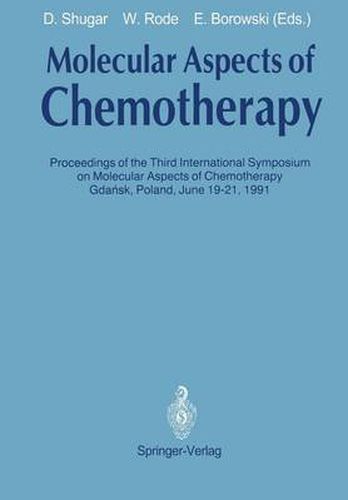Readings Newsletter
Become a Readings Member to make your shopping experience even easier.
Sign in or sign up for free!
You’re not far away from qualifying for FREE standard shipping within Australia
You’ve qualified for FREE standard shipping within Australia
The cart is loading…






This title is printed to order. This book may have been self-published. If so, we cannot guarantee the quality of the content. In the main most books will have gone through the editing process however some may not. We therefore suggest that you be aware of this before ordering this book. If in doubt check either the author or publisher’s details as we are unable to accept any returns unless they are faulty. Please contact us if you have any questions.
While serendipity and random screening continue to fulfil a significant role in the search for new drugs, current remarkable advances in molecular biology and genetics are dictating to a profound extent the approaches employed in their development. Increasing attention is being devoted to investigations of the mechanisms of action of existing drugs, and the sources of undesired side effects, at the molecular level. The information so derived is now extensively applied, with the aid of broad inter disciplinary approaches, both theoretical and experimental, to improvements in existing drugs, and the rational design of new ones. The foregoing comprised the subject matter of the 3rd Inter national Symposium on Molecular Aspects of Chemotherapy , under the auspices of the International Society of Chemotherapy, and organized by the Committee on Drug Research, Polish Academy of Sciences, and the Department of Biotechnology and Biochemistry, Technical University of Gdansk. This volume includes the texts of the review lectures presented by invited participants on up-to-date achievements, and future perspectives, in molecular mechanisms of inhibition of cellular functions and metabolism, with emphasis on the design and mechanisms of action of chemotherapeutic agents for treatment of bacterial, neoplastic, viral and parasitic diseases. From the Contents, it will be seen that the range of disciplines represented was a broad one, including theoretical and experimental chemists, physicists, molecular biologists, biochemists, enzymologists, virologists, tumour biologists. Plenary sessions were supple mented by several poster sessions.
$9.00 standard shipping within Australia
FREE standard shipping within Australia for orders over $100.00
Express & International shipping calculated at checkout
This title is printed to order. This book may have been self-published. If so, we cannot guarantee the quality of the content. In the main most books will have gone through the editing process however some may not. We therefore suggest that you be aware of this before ordering this book. If in doubt check either the author or publisher’s details as we are unable to accept any returns unless they are faulty. Please contact us if you have any questions.
While serendipity and random screening continue to fulfil a significant role in the search for new drugs, current remarkable advances in molecular biology and genetics are dictating to a profound extent the approaches employed in their development. Increasing attention is being devoted to investigations of the mechanisms of action of existing drugs, and the sources of undesired side effects, at the molecular level. The information so derived is now extensively applied, with the aid of broad inter disciplinary approaches, both theoretical and experimental, to improvements in existing drugs, and the rational design of new ones. The foregoing comprised the subject matter of the 3rd Inter national Symposium on Molecular Aspects of Chemotherapy , under the auspices of the International Society of Chemotherapy, and organized by the Committee on Drug Research, Polish Academy of Sciences, and the Department of Biotechnology and Biochemistry, Technical University of Gdansk. This volume includes the texts of the review lectures presented by invited participants on up-to-date achievements, and future perspectives, in molecular mechanisms of inhibition of cellular functions and metabolism, with emphasis on the design and mechanisms of action of chemotherapeutic agents for treatment of bacterial, neoplastic, viral and parasitic diseases. From the Contents, it will be seen that the range of disciplines represented was a broad one, including theoretical and experimental chemists, physicists, molecular biologists, biochemists, enzymologists, virologists, tumour biologists. Plenary sessions were supple mented by several poster sessions.